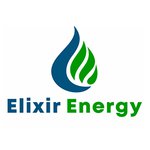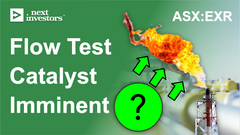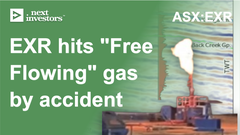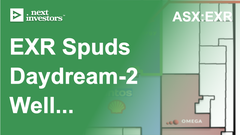Oil and gas juniors looking the goods
Hey! Looks like you have stumbled on the section of our website where we have archived articles from our old business model.
In 2019 the original founding team returned to run Next Investors, we changed our business model to only write about stocks we carefully research and are invested in for the long term.
The below articles were written under our previous business model. We have kept these articles online here for your reference.
Our new mission is to build a high performing ASX micro cap investment portfolio and share our research, analysis and investment strategy with our readers.
Click Here to View Latest Articles
There’s no doubt that the small end of the oil and gas sector is heating up, having already delivered shareholders some major recent gains.
In London, Mongolian-focused oil and gas exploration company Petro Matad (AIM:MATD), has been one of the better performing oil and gas stocks over the course of 2019 to date, rising ~400% since the start of the year. MATD just announced that it has hit an oil target in one of the two exploration wells it is currently drilling in Eastern Mongolia.
Locally, impressive drilling results in the Perth Basin from Strike Energy (ASX:STX) and its JV partner Warrego Energy (ASX:WGO), lit a fire under the pair’s share prices beginning 23 August with Warrego and Strike soaring 90% and 65%, respectively, on the results.
Like Petro Matad, Elixir Energy (ASX:EXR) is also exploring in Mongolia. While Elixir is only just creeping onto the investor radar, it is drawing some comparisons to Strike and Warrego — not due to its location — but because of its huge upside gas discovery potential. Arguably, finding gas next door to gas hungry China would be far more attractive than in the over-supplied Western Australian market.
Elixir is also drawing comparisons to what has almost certainly been Australia’s most successful oil and gas junior of the past two years: Galilee Energy (ASX:GLL).
Galilee’s 100% owned and operated Glenaras Gas Project’s multi-lateral pilot program in central Queensland’s Galilee Basin is performing strongly and demonstrating excellent water rates, with the five wells flowing in excess of 6,200 barrels of water per day (BWPD) in aggregate as the reservoir is continuing to be drawn down. Gas is now also starting to flow and its production rate is on the up.
Petro Matad strikes Mongolian oil
AIM-listed Petro Matad (AIM:MATD) has provided an update on the Heron-1 well in Block XX, eastern Mongolia.
Its share price opened almost 20% higher on the news in London overnight, reaching £9.95 — a 400%+ rise since its lows in December last year of below £2.0 per share. It did pull back into the session, but remains up around recent highs. The explorer is now capped at £50 million (A$90M) and has further wells due imminently, plus at least another well planned for later in 2019.
Heron-1 has been drilled to a total depth of 2960 metres with the top Lower Tsagaantsav reservoir, the primary target for the well, encountered at 2803 metres — 5 metres shallower than expected. The formation drilled from 2803 to 2880 metres was predominantly sandstone interbedded with shales and siltstones.
Oil and gas shows were recorded over this interval and on the basis of the drilling data, the gross reservoir interval in Heron-1 appears to be very similar to the productive reservoirs found in oil wells operated immediately to the north in Block XIX by Chinese giant PetroChina.
Mike Buck, the CEO of Petro Matad explained that the results of the Heron-1 well are encouraging, saying, “Along with the well and wireline logging data being consistent with our pre-drill prognosis, there is also evidence of zones with better than expected porosity/permeability characteristics.
“The well will now be tested and we are pushing the contractor to mobilise equipment as quickly as possible. Further updates will be provided in due course.”
MATD is also drilling the Red Deer well at the moment and drilling should reach target depth in mid-September, while the rig will shortly move to drill the Gazelle-1 well which it should spud in late September.
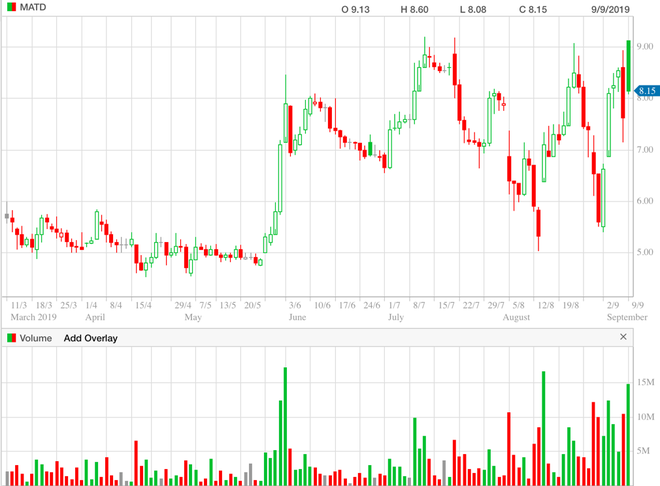
MATD’s oil will be welcomed in Mongolia, as the country currently has to import diesel and gasoline, although it is planning to replace these with a local refinery.
Gas will also be strongly supported in the country — its capital city Ulaanbaatar is the most polluted in the world and clean burning methane could do a lot to improve that.
Chinese oil giants PetroChina and Sinopec are currently the only oil producers in Mongolia while both are also major investors in Australia’s CBM and LNG projects. One could readily foresee these huge companies developing an appetite for Mongolian gas.
Elixir Energy readies for drilling
Not unlike Petro Matad, Elixir Energy is exploring in the Mongolia’s Gobi Desert, over a major Permian coal bearing region, where it is all set to kick off the drilling of its initial 2-well fully tested corehole program.
Elixir’s 100% owned Nomgon IX coalbed methane (CBM) production sharing contract (PSC) is located in the South Gobi Desert in Mongolia, just 410 kilometres from China’s major gas pipeline network.
The company’s gas prospective resources sit within this giant seven million acre (30,000 sq. km) PSC that is strategically located on the China-Mongolia border.
Its certified CBM risked prospective resource of 7.6 Tcf, and un-risked recoverable prospective resources of 40 Tcf, is ideally placed for future gas sales into the extensive Northern China gas transmission and distribution network. The next six to twelve months will be crucial in commencing the de-risking of this gas resource.
Elixir’s first CBM coreholes are due to spud within the coming month in the South Gobi region of Mongolia, proximate to the Chinese border. All approvals have been secured, the drilling rig secured, and the first well location finalised.
As explained by Elixir’s managing director, Neil Young on August 19, “Preparations for Elixir’s first fully tested core-hole in the Nomgon IX PSC are going to plan and we look forward to spudding the well in around 4-6 weeks”, which equates to late-September/early-October.
Elixir has gained 150%+ since its lows in March, but I suspect that there could be plenty more to come as the company approaches the drilling of its initial corehole and aims to establish a contingent resource by early 2020.
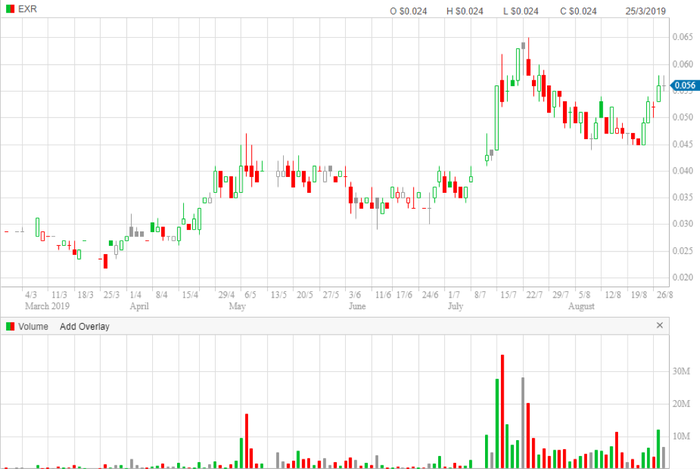
Along with Young, former managing director of Queensland Gas Company (formerly ASX:QGC) Richard Cottee as non-executive chairman could play a central role in unlocking value at Elixir.
Cottee steered QGC from a $20 million junior to a $5.7 billion takeover and has said that “as an early stage CSG explorer that holds some well-located and highly promising acreage, Elixir’s prospects resonates with my early days at QGC”.
As is the case with Petro Matad, Elixir Energy is also solely focused on exploring in Mongolia (EXR for gas). Mongolia is the most sparsely populated country in the world, allowing onshore oil and gas exploration to take place far more easily without unduly disturbing local residents than in many other countries.
However, Mongolia is not remote — it lies just to the North of China, which is now both the world’s largest oil importer and the largest gas importer.
But location is not the only intriguing parallel between the two companies, even though Elixir’s current market capitalisation of A$27.8M (£15.5M) is less than one third of MATD’s £50 million (A$90M).
Both own very large acreage positions — in the millions of acres — which is enormous in global terms, although Elixir’s PSC is much newer than that of MATD and still has many years to run.
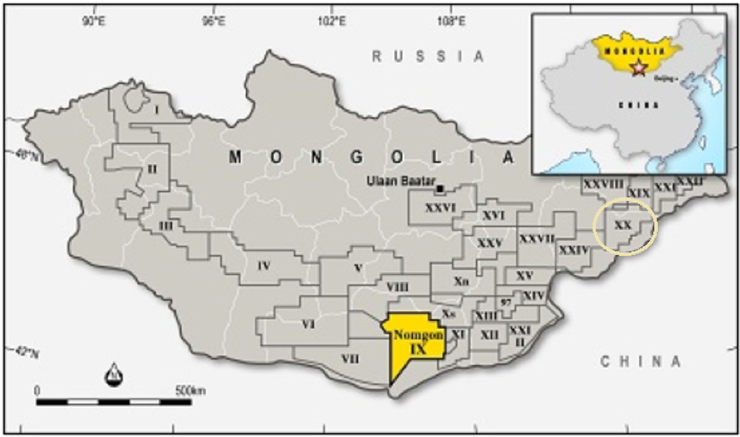
Ownership of their PSCs for both is at the 100% level — making the companies much more attractive to the “big boys” in a success case and as a minimum giving far more options over farming down.
Speaking of farm-ins, Petro Matad was fortunate in 2015 when it farmed out to London-listed giant, BG Group, then one of the world’s smartest and most successful oil and gas explorers.
However, that good fortune took a mixed turn with Shell acquiring BG soon after and divesting many interests globally, including those in Mongolia, although this wasn’t necessarily bad for MATD as Shell paid out the value of the BG farm-in in cash.
BG was one of the world’s foremost coal-bed methane (CBM) operators, having acquired QGC in Australia in 2009 for A$5.7 billion. QGC’s then managing director was Richard Cottee — EXR’s current chairman. The oil and gas sector is a small one in which relationships are a critical part of deal-making.
Anecdotally, BG was said to have a key eye on Mongolia’s CBM potential (in addition to oil) when it farmed-in with MATD.
Hopefully, this small nation will be the successful host of two material oil and gas discoveries from Petro Matad and Elixir, respectively, by the end of the year.
“Staggering” discovery propels Perth Basin gas stocks Strike & Warrego
Back on home soil, ASX oil and gas junior Strike Energy (ASX:STX), with its joint venture partner Warrego Energy (ASX:WGO), announce it had uncovered a “STAGGERING KINGIA GAS DISCOVERY AT WESTA ERREGULLA” (yes, in all caps) in the Perth Basin, onshore Western Australia.
Operated by Strike, the JV discovered gas in the Kingia sandstone as part of the drilling campaign at its West Erregulia-2 well, located near Dongara, 300 kilometres north of Perth. Shares in Strike and Warrego soared 90% and 65%, respectively on the news.
Strike managing director, Stuart Nicholls said the Kingia discovery exceeded the company’s expectations with higher reservoir quality than the Waitsia gas field and with West Erregulla-2 now the deepest well ever drilled onshore Australia.
Following up that discovery at Kingia, and its earlier August discovery at Wagina Sandstone, the JV went on to announce another significant conventional gas discovery at High Cliff Sandstone on 6 September, underlining the substantial commercial potential of West Erregulla and the onshore Perth Basin.
A production completion will now be run across the Kingia and High Cliff zones ahead of flow testing, with further analysis and evaluation of well data and these test results required before an initial Resource certification is prepared.
Interestingly, Strike (and Warrego) is a solid example of what a hydrocarbon discovery can do for a company’s share price.
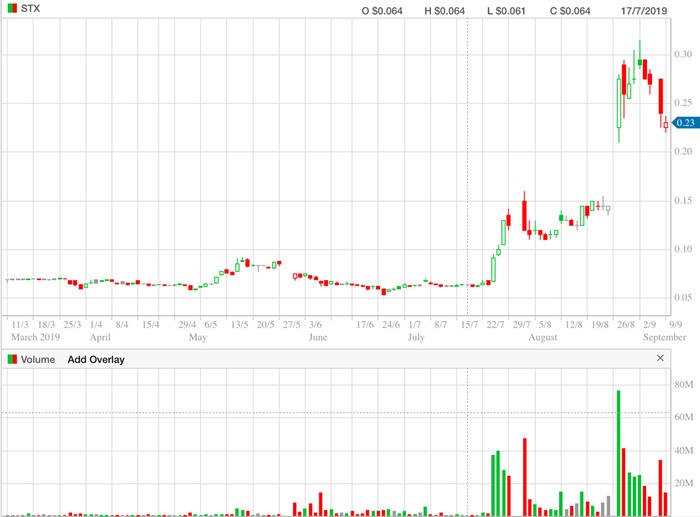
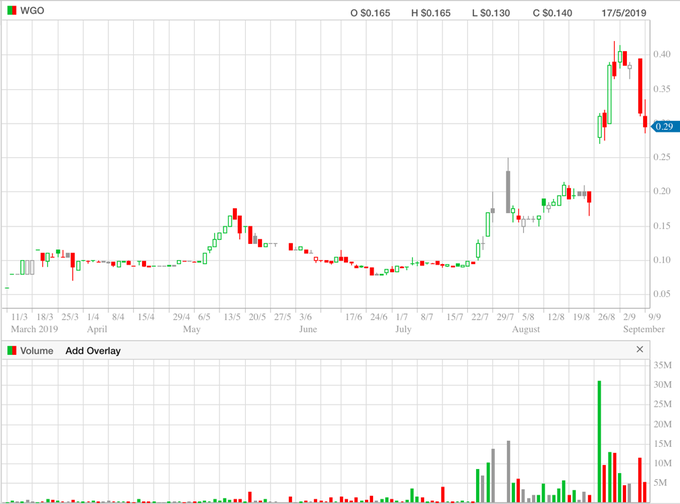
Warrego has delivered an impressive return to shareholders, gaining 640% over the past year, even after pulling back some since its spike on last week’s news.
As for Strike, back in June the company was trading at 5.4 cents per share, for an $84 million market capitalisation. Since then, in the lead up to and after the announcement of its gas discovery, the company’s share price rallied to 28 cents a 420% gain, for a $436 million-plus market cap.
Strike Energy’s position, back in June, is not unlike Elixir today. With all the pieces in place to drill its first corehole, Elixir is trading at 5.5 cents per share and capped at $27 million, (Strike was 5.4¢ prior to the discovery).
The 10-bagger Galilee Energy
Inarguably the most successful ASX oil and gas stock over the last two years has been coal bed methane (CBM) focused Galilee Energy (ASX:GLL).
The company’s primary area of focus is central Queensland where it claims one of the largest gas contingent resource holdings on the east coast of Australia. Galilee is appraising in the Galilee Basin at its 100%-owned Glenaras Gas Project that is contained within ATP 2019 in the western portion of the Basin.
Current activity at the project involves an enhanced five-well multi-lateral pilot, designed to drawdown the coal below critical desorption and produce commercial gas flow rates. This is the final step in converting the resources of the Glenaras project into a maiden proved and probable reserve position.
As exploration at Glenaras has progressed, the company’s stock has gained some significant attention. With its current share price now well north of A$1, after being priced at less than 10 cents two years ago, it has been a true 10-bagger since mid-2017.
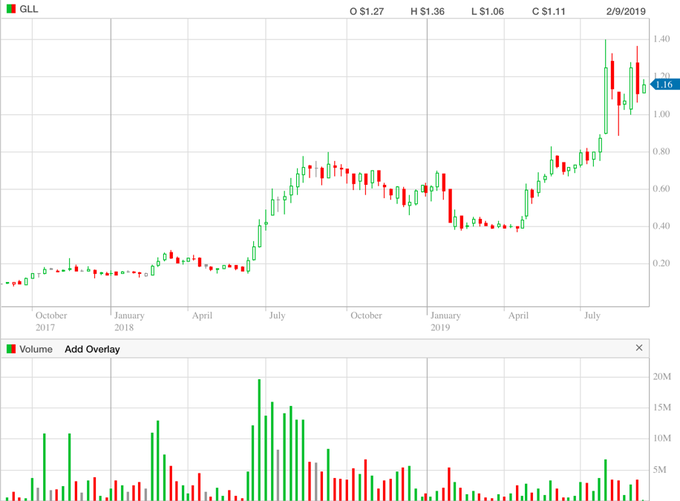
Like Strike, and Petro Matad for that matter, Galilee also has many parallels with Elixir Energy.
The two explorers are each focused on coalbed methane (CBM), or coal seam gas (CSG) as it’s more commonly known in Australia. This is arguably the most capital light and lowest risk segment of the oil and gas sector — wells are cheap and the probability of making a discovery is much higher than for, say, conventional oil.
Both Galilee and Elixir own 100% of their licences, providing maximum optionality in terms of either bringing in a large partner, or becoming a takeover target. Both have very large licence areas and hence large gas resources — again making them more attractive to a range of much larger companies.
Both are proximate to attractive gas markets: Galilee to east coast Australia and Elixir to China, plus, the assets of each are complementary to regional energy developments.
Aiming to commence construction in the next few years, Jemena’s proposed pipeline is designed to connect gas from Galilee Energy’s Glenaras Gas Project near Longreach, Queensland, to Jemena’s Gas Pipeline near Injune. The two parties are working towards agreed development milestones which will fast-track the delivery of gas from the Galilee Basin to the east coast domestic market with the pipeline initially expected to transport 200TJ of gas per day.
For Elixir, in addition to supplying gas through a pipeline, there’s the Asian Super Grid — a proposed massive system of interconnected electricity grids across North Eastern Asia that allows for the exchange of power from renewable and other clean energy resources like solar, wind, and hydro (and gas) across the continent.
It would involve building a land and ocean floor based power network to connect countries’ electricity grids and include massive new transmission lines through the Gobi Desert — where EXR’s massive PSC is located.
The teams of both Galilee and Elixir come with substantial CBM specific expertise. Indeed, the companies share the very highly rated nonexecutive director, Stephen Kelemen, who previously headed Santos’s coal seam gas business.
Galilee’s field activities are currently ahead of Elixir’s, and its market capitalisation more than 10 times higher, so it’s not unreasonable to expect that the factors which drove Galilee’s success could do the same for Elixir over the coming year or so.
General Information Only
S3 Consortium Pty Ltd (S3, ‘we’, ‘us’, ‘our’) (CAR No. 433913) is a corporate authorised representative of LeMessurier Securities Pty Ltd (AFSL No. 296877). The information contained in this article is general information and is for informational purposes only. Any advice is general advice only. Any advice contained in this article does not constitute personal advice and S3 has not taken into consideration your personal objectives, financial situation or needs. Please seek your own independent professional advice before making any financial investment decision. Those persons acting upon information contained in this article do so entirely at their own risk.
Conflicts of Interest Notice
S3 and its associated entities may hold investments in companies featured in its articles, including through being paid in the securities of the companies we provide commentary on. We disclose the securities held in relation to a particular company that we provide commentary on. Refer to our Disclosure Policy for information on our self-imposed trading blackouts, hold conditions and de-risking (sell conditions) which seek to mitigate against any potential conflicts of interest.
Publication Notice and Disclaimer
The information contained in this article is current as at the publication date. At the time of publishing, the information contained in this article is based on sources which are available in the public domain that we consider to be reliable, and our own analysis of those sources. The views of the author may not reflect the views of the AFSL holder. Any decision by you to purchase securities in the companies featured in this article should be done so after you have sought your own independent professional advice regarding this information and made your own inquiries as to the validity of any information in this article.
Any forward-looking statements contained in this article are not guarantees or predictions of future performance, and involve known and unknown risks, uncertainties and other factors, many of which are beyond our control, and which may cause actual results or performance of companies featured to differ materially from those expressed in the statements contained in this article. S3 cannot and does not give any assurance that the results or performance expressed or implied by any forward-looking statements contained in this article will actually occur and readers are cautioned not to put undue reliance on forward-looking statements.
This article may include references to our past investing performance. Past performance is not a reliable indicator of our future investing performance.

